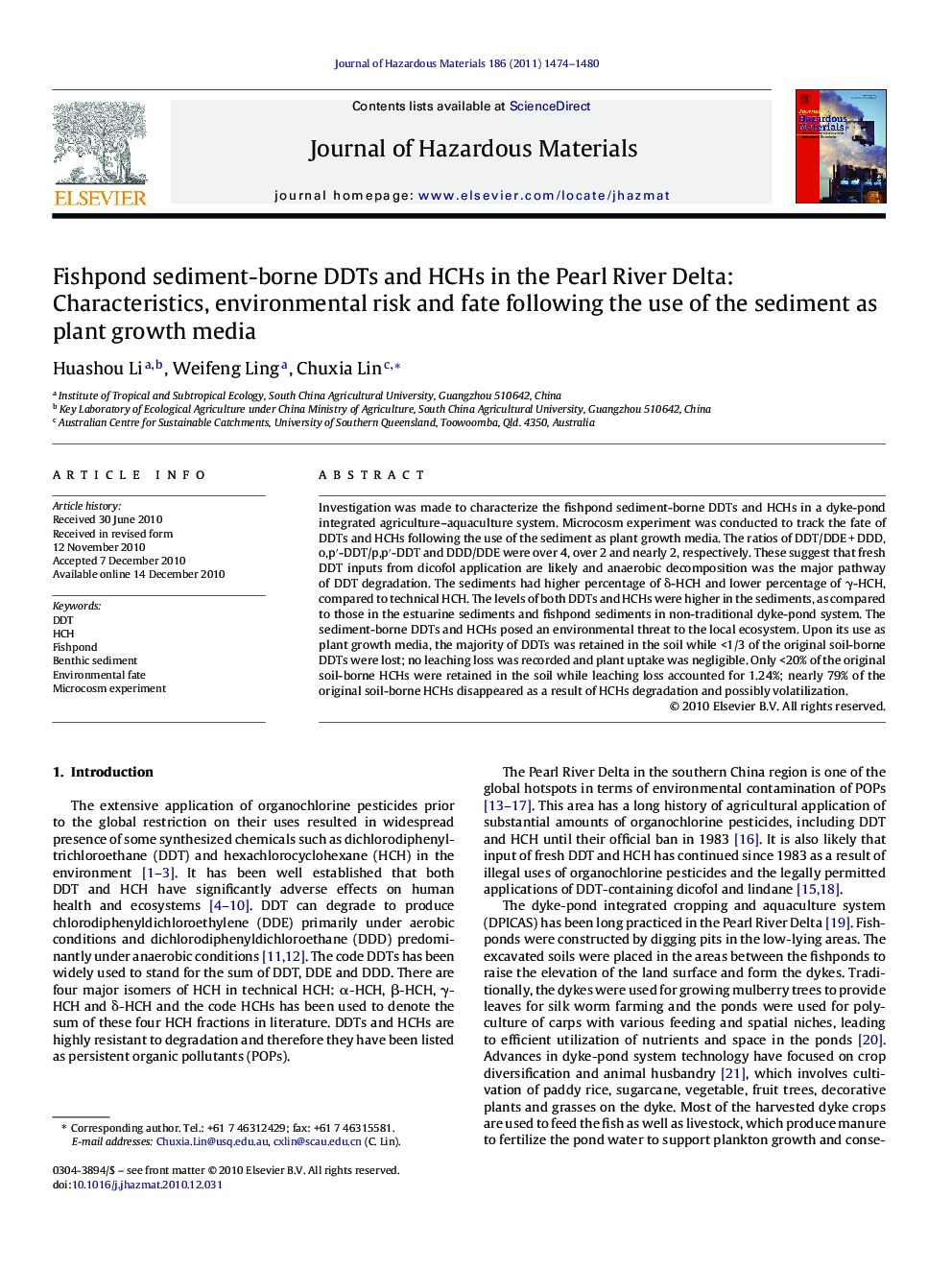| کد مقاله | کد نشریه | سال انتشار | مقاله انگلیسی | نسخه تمام متن |
|---|---|---|---|---|
| 6972699 | 1453142 | 2011 | 7 صفحه PDF | دانلود رایگان |
عنوان انگلیسی مقاله ISI
Fishpond sediment-borne DDTs and HCHs in the Pearl River Delta: Characteristics, environmental risk and fate following the use of the sediment as plant growth media
دانلود مقاله + سفارش ترجمه
دانلود مقاله ISI انگلیسی
رایگان برای ایرانیان
کلمات کلیدی
موضوعات مرتبط
مهندسی و علوم پایه
مهندسی شیمی
بهداشت و امنیت شیمی
پیش نمایش صفحه اول مقاله

چکیده انگلیسی
Investigation was made to characterize the fishpond sediment-borne DDTs and HCHs in a dyke-pond integrated agriculture-aquaculture system. Microcosm experiment was conducted to track the fate of DDTs and HCHs following the use of the sediment as plant growth media. The ratios of DDT/DDE + DDD, o,pâ²-DDT/p,pâ²-DDT and DDD/DDE were over 4, over 2 and nearly 2, respectively. These suggest that fresh DDT inputs from dicofol application are likely and anaerobic decomposition was the major pathway of DDT degradation. The sediments had higher percentage of δ-HCH and lower percentage of γ-HCH, compared to technical HCH. The levels of both DDTs and HCHs were higher in the sediments, as compared to those in the estuarine sediments and fishpond sediments in non-traditional dyke-pond system. The sediment-borne DDTs and HCHs posed an environmental threat to the local ecosystem. Upon its use as plant growth media, the majority of DDTs was retained in the soil while <1/3 of the original soil-borne DDTs were lost; no leaching loss was recorded and plant uptake was negligible. Only <20% of the original soil-borne HCHs were retained in the soil while leaching loss accounted for 1.24%; nearly 79% of the original soil-borne HCHs disappeared as a result of HCHs degradation and possibly volatilization.
ناشر
Database: Elsevier - ScienceDirect (ساینس دایرکت)
Journal: Journal of Hazardous Materials - Volume 186, Issues 2â3, 28 February 2011, Pages 1474-1480
Journal: Journal of Hazardous Materials - Volume 186, Issues 2â3, 28 February 2011, Pages 1474-1480
نویسندگان
Huashou Li, Weifeng Ling, Chuxia Lin,